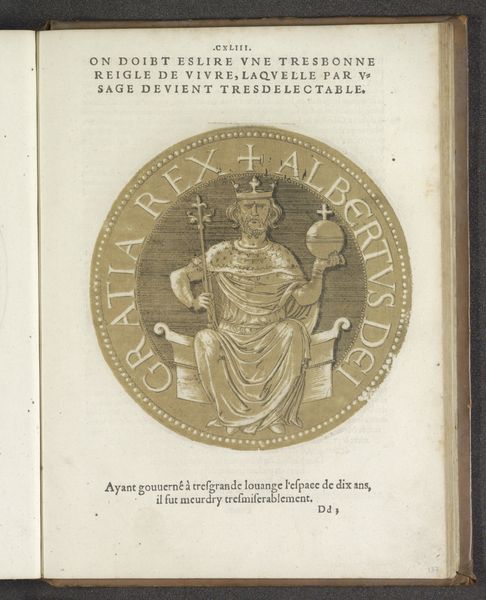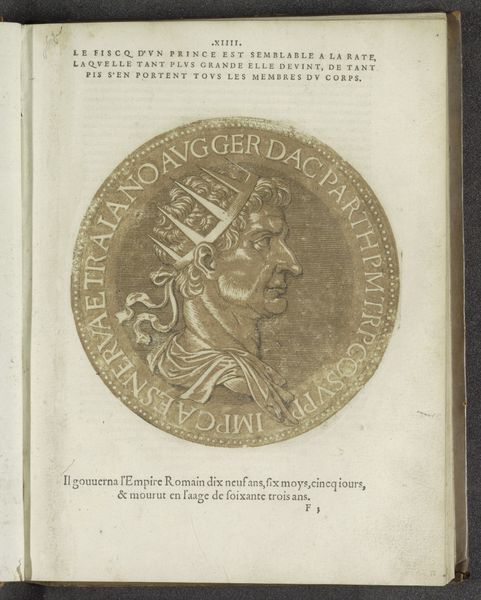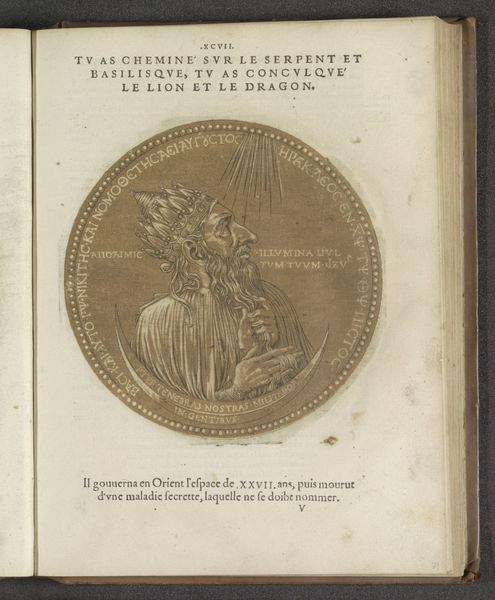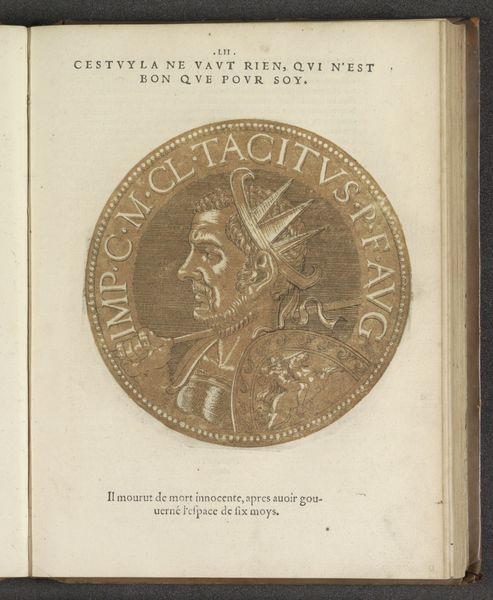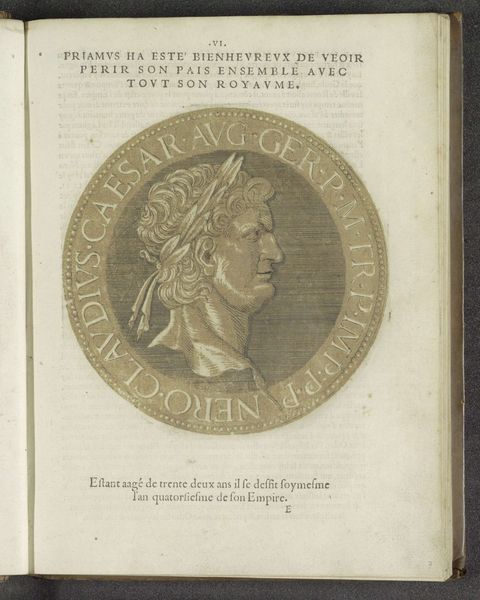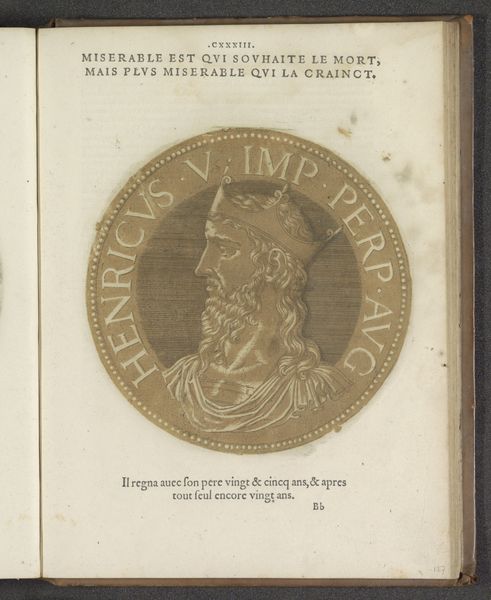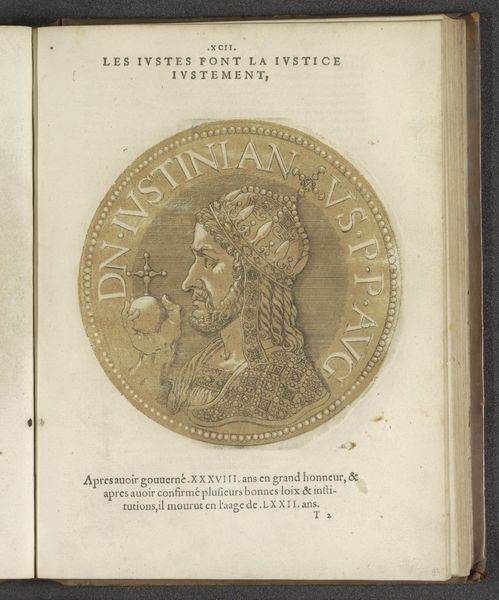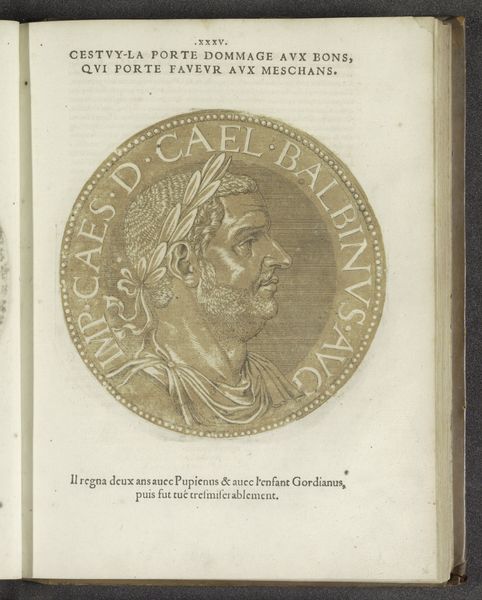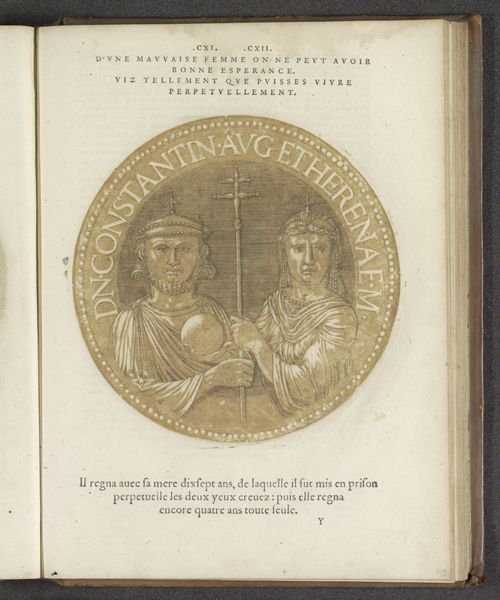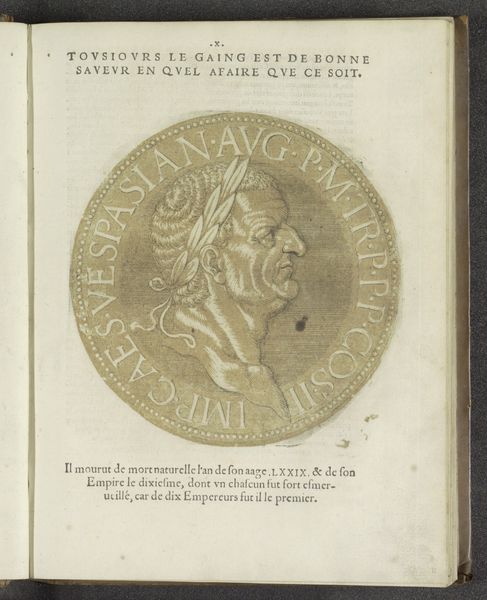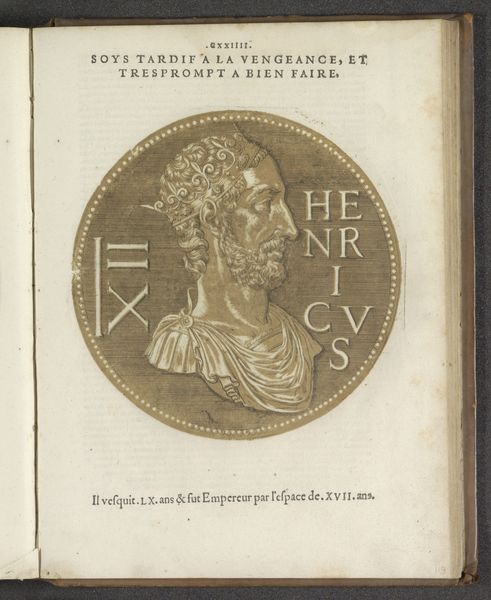
drawing, coloured-pencil
#
portrait
#
drawing
#
byzantine-art
#
coloured-pencil
#
coloured pencil
#
ancient-mediterranean
Dimensions: height 181 mm, width 180 mm
Copyright: Rijks Museum: Open Domain
Editor: Here we have "Portret van keizer Justinus I," a colored pencil drawing from around 1557-1559 by Joos Gietleughen. It feels very controlled, almost mechanical in its precision. What strikes you about this work? Curator: It’s intriguing to consider the production of this image within the context of 16th-century bookmaking. What type of labor was involved in creating the colored pencils, preparing the paper, and then meticulously rendering this portrait? Each stage involved different crafts and skills. How might the materials themselves - the pigments available, the texture of the paper - have influenced the artist’s approach and the final appearance of Justinus? Editor: So you are interested in how the picture was created? Curator: Exactly! What’s often overlooked in portraits of emperors is the labor behind representing power. We’re presented with an image of authority, but I am interested in who exactly made that possible, who manufactured the colored pencils used in its execution? Editor: It's not just about the "who" in terms of the Emperor but also the 'who' in terms of making it all come to life as a portrait. It makes me think differently about value; that labor itself gives additional value to the portrait. Curator: Precisely. And further, to question what other forms of labour went into supporting those who did this specialized work. From Byzantine ruler to modern consumer, who gains agency through the making of this artwork? What would happen if the system disappeared overnight? Editor: That gives me a lot to consider – looking beyond the subject of the portrait to the whole system of making! Thanks!
Comments
No comments
Be the first to comment and join the conversation on the ultimate creative platform.
